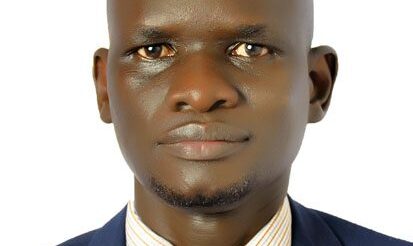TONNY ODOKONYERO: Boosting socio-economic development through innovation in energy financing for households – PML Daily

Sustainable energy access is essential for driving Uganda’s agenda for socio-economic transformation, as enshrined in the current National Development Plan (NDPIII).
Energy is positioned as a crucial element in the socio-economic development drive in the plan, which the government set forth in part, to improve the quality of life of Ugandans, through increasing access to and consumption of clean energy. This is as well crucial for domesticating the achievement of the seventh Sustainable Development Goal (SDG) – to ensure access to affordable, reliable, sustainable, and modern energy universally.
To improve the quality of life, it is important that sustainable and sufficient energy is delivered even to the most basic economic unit, in order to ensure decent living conditions in households and enable firms including household-based enterprises to flourish.
However, a number of households are still faced with energy poverty – both multidimensional and severe energy deprivation.
Data from the last Uganda National Household Survey (2019/2020) indicate that overall, 57% of households use electricity for lighting, but most of these use other forms of electricity such as solar systems or kits (38%) compared to grid electricity.
The rest of the households use unclean forms of energy such as canister wick lamps or “Tadooba”, paraffin lanterns, firewood, and candles among others.
For cooking, the majority of the households use firewood (almost three-quarters) and charcoal (21%), whereas only 1.4% use electricity. The prevalent energy poverty is due to binding constraints to modern energy access, hence hampering the role of energy in driving the country’s socio-economic transformation agenda.
These include among others; high cost of initial connection, long distances to grid electricity, and lack of domestic capital for energy infrastructure investment.
Addressing the constraints requires adequate and well-targeted energy infrastructure investments.
Development Finance Institutions (DFIs) as partners in development have a critical role to play in this, through financing interventions that can accelerate socio-economic development. Accordingly, the Uganda Development Bank (UDB) as a DFI is undertaking an initiative that is underway, pertinent for unlocking some of the binding constraints to household energy access through a financing innovation termed Hybrid Electricity Customer Connection Credit Framework (HECCCF).
In particular, this financing solution is paramount in addressing a common problem encountered by a sizeable number of Ugandan households that do not use grid electricity – i.e., the problem of “cost of initial connection being too expensive and unaffordable”, or high cost of initial connection. The recently launched HECCCF is an innovative financing solution designed by UDB in partnership with key energy sector players such as – Electricity Regulatory Authority, Ministry of Energy and Mineral Development, and Umeme.
The framework (HECCCF) provides a relatively affordable solution for households to access grid electricity under a no-pole connection arrangement at a subsidized cost of Shs470,000, compared to the actual or unsubsidized cost of Shs720,883.
The intervention, therefore, brings down the cost of no-pole electricity connection by 35%. It also provides an option of a lower initial connection fee of 200,000 shillings to increase affordability.
The remaining Shs270,000 is covered by UDB, designed to be recovered as part of electricity purchase over a period of eight years under the credit framework. It targets connecting 550,000 households to have access to electricity.
According to the Uganda National Household Survey of 2019/2020, less than 20% of households (about 1.7 million) have access to grid electricity, especially for lighting. With the HECCCF intervention alone, an additional 0.55 million households will potentially be connected to the grid electricity, which will make over 2 million households enjoy the benefits of grid electricity.
From the same survey data, about 23% of the households with no access to grid electricity, estimated at circa 1.6 million, are constrained due to the challenge of high initial cost of connection. With the HECCCF financing solution, at least 30% of these households will expectedly be salvaged out of this situation.
The instantaneous gain may be basic to beneficiary households (i.e., lighting), but it is a milestone towards changing socio-economic outcomes – e.g. improving clean energy use at the household level, and subsequently paving way for appropriate gainful use of energy.
The HECCCF is therefore an important intervention for creating access to energy since it is well aligned to the NDPIII programme of energy development, and will go a long way towards driving the achievement of key results for the programme,
The writer Tonny Odokonyero is a Senior Economist – Microeconomic Analysis- at Uganda Development Bank
